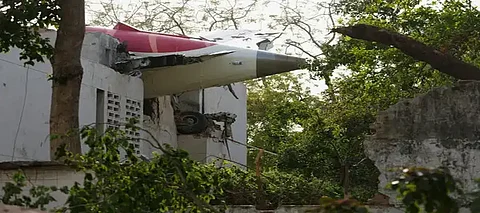

The Air India Crash near Ahmedabad Airport on Thursday afternoon has shocked the entire world. From celebrities in India to world leaders around the world, including US President Donald Trump, French President Emmanuel Macron, etc, have extended their condolences. In fact, the UK and the US have extended their help if New Delhi needs any in solving the case or investigating the Air India Crash Reason. For those who still haven't followed the news, on Thursday, tragedy struck India after Air India Flight AI-171, flying from Ahmedabad to London, crashed shortly after take-off. The crash occurred just minutes after the Boeing 787 Dreamliner took off around 1:38 PM, according to the DGCA. Out of 242 on board, 241 died and only 1 survived, who is now being called a miracle man.
Now, the question arises what's next in the Air India Flight Crash? Below is all you need to know-
As per The Print, the Aircraft Accident Investigation Bureau (AAIB) has launched a formal inquiry, following international aviation protocols laid down by the International Civil Aviation Organization (ICAO). A team from the Directorate General of Civil Aviation (DGCA) will be joined by officials from international regulatory bodies such as the National Transportation Safety Board (NTSB) of the United States and the European Union Aviation Safety Agency (EASA).
Investigators will try to retrieve and analysis of the flight's Flight Data Recorder (FDR) and Cockpit Voice Recorder (CVR). In simpler terms, the Black Box. These devices store crucial flight parameters and cockpit audio, offering insight into the final moments of the ill-fated Boeing 787-8 Dreamliner. Once retrieved, black boxes are sent to specialized laboratories where experts assess the Crash-Survivable Memory Unit (CSMU). If required, memory chips are transplanted into a golden chassis, a protective device designed to safely extract data.
The FDR contains hundreds of flight parameters from speed and altitude to control inputs. On the other hand, the CVR provides cockpit conversations and ambient sounds, often revealing human factors that contributed to the crash. Investigators handle CVR data with strict confidentiality due to legal and emotional sensitivities.
Furthermore, at the crash site, forensic teams videograph, photograph, and document every piece of debris. Even burnt remains of wings, passenger seats, and landing gear can yield insights into speed, angle of descent, and impact forces.
Then, a Court of Inquiry will be carried out, reportedly comprising a three-member bench. This tribunal gathers testimonies from eyewitnesses, survivors (if any), airline staff, engineers, and Air Traffic Control officers. Once all technical analysis and testimonies are compiled, the AAIB will release a public report.